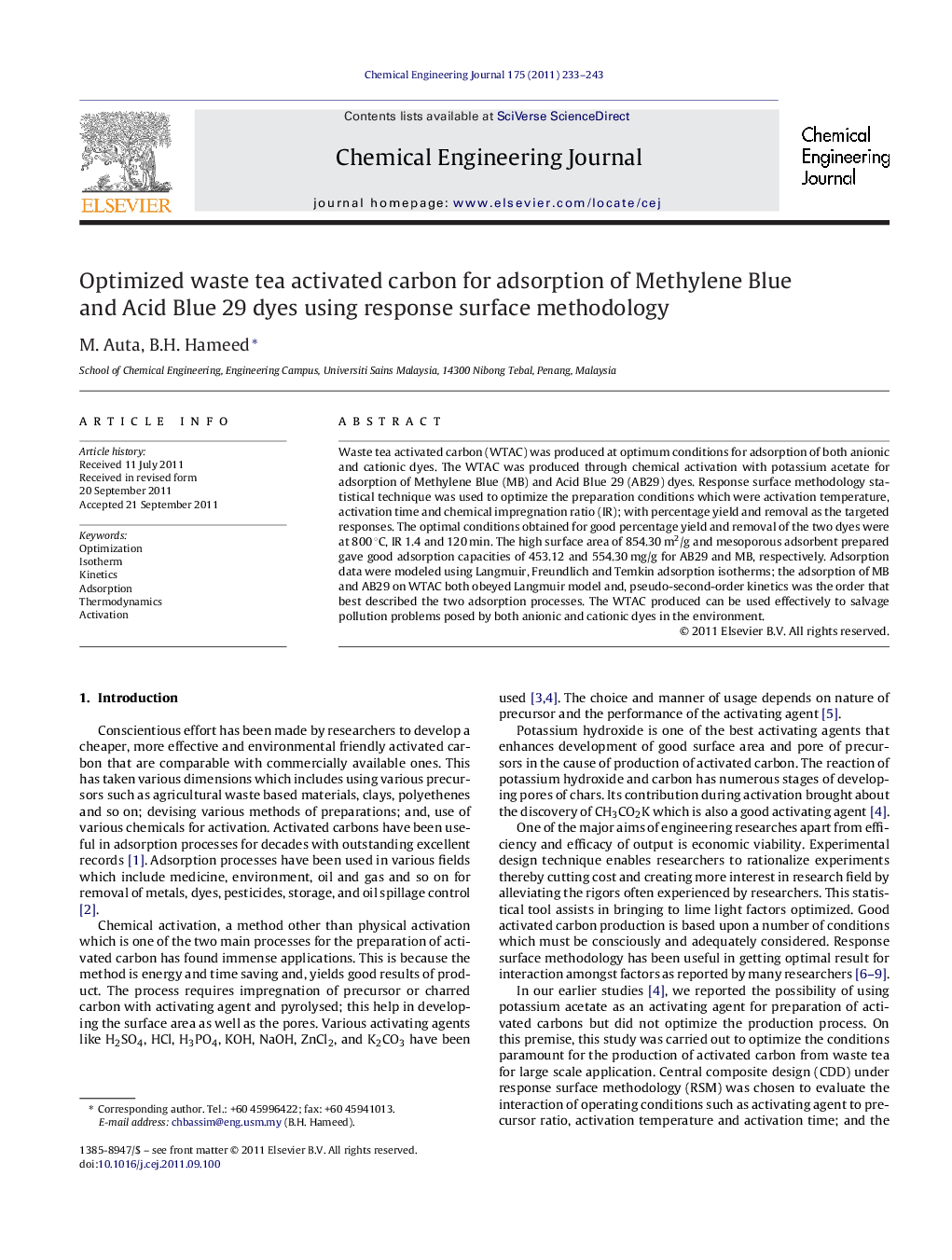| Article ID | Journal | Published Year | Pages | File Type |
|---|---|---|---|---|
| 150978 | Chemical Engineering Journal | 2011 | 11 Pages |
Waste tea activated carbon (WTAC) was produced at optimum conditions for adsorption of both anionic and cationic dyes. The WTAC was produced through chemical activation with potassium acetate for adsorption of Methylene Blue (MB) and Acid Blue 29 (AB29) dyes. Response surface methodology statistical technique was used to optimize the preparation conditions which were activation temperature, activation time and chemical impregnation ratio (IR); with percentage yield and removal as the targeted responses. The optimal conditions obtained for good percentage yield and removal of the two dyes were at 800 °C, IR 1.4 and 120 min. The high surface area of 854.30 m2/g and mesoporous adsorbent prepared gave good adsorption capacities of 453.12 and 554.30 mg/g for AB29 and MB, respectively. Adsorption data were modeled using Langmuir, Freundlich and Temkin adsorption isotherms; the adsorption of MB and AB29 on WTAC both obeyed Langmuir model and, pseudo-second-order kinetics was the order that best described the two adsorption processes. The WTAC produced can be used effectively to salvage pollution problems posed by both anionic and cationic dyes in the environment.
► Optimized waste tea activated carbon was produced using central composite design. ► Potassium acetate was used as activating agent. ► Anionic and cationic dyes were adsorbed using the activated carbon produced. ► Langmuir model and pseudo-second-order kinetics described the adsorption process.
